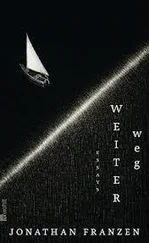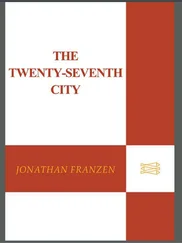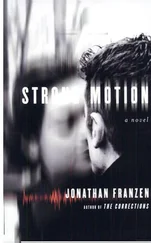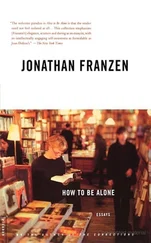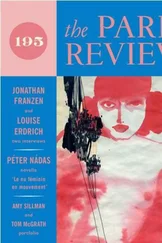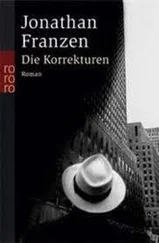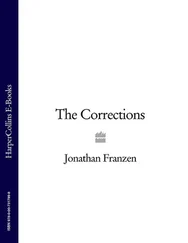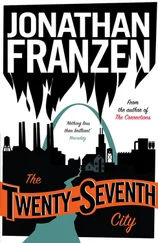Jonathan Franzen - The Discomfort Zone
Здесь есть возможность читать онлайн «Jonathan Franzen - The Discomfort Zone» — ознакомительный отрывок электронной книги совершенно бесплатно, а после прочтения отрывка купить полную версию. В некоторых случаях можно слушать аудио, скачать через торрент в формате fb2 и присутствует краткое содержание. Город: Ney York, Год выпуска: 2006, ISBN: 2006, Издательство: Farrar, Straus and Giroux, Жанр: Современная проза, на английском языке. Описание произведения, (предисловие) а так же отзывы посетителей доступны на портале библиотеки ЛибКат.
- Название:The Discomfort Zone
- Автор:
- Издательство:Farrar, Straus and Giroux
- Жанр:
- Год:2006
- Город:Ney York
- ISBN:918-0-312-94841-2
- Рейтинг книги:3.5 / 5. Голосов: 2
-
Избранное:Добавить в избранное
- Отзывы:
-
Ваша оценка:
- 80
- 1
- 2
- 3
- 4
- 5
The Discomfort Zone: краткое содержание, описание и аннотация
Предлагаем к чтению аннотацию, описание, краткое содержание или предисловие (зависит от того, что написал сам автор книги «The Discomfort Zone»). Если вы не нашли необходимую информацию о книге — напишите в комментариях, мы постараемся отыскать её.
Notable Book of the Year The Discomfort Zone
The Discomfort Zone — читать онлайн ознакомительный отрывок
Ниже представлен текст книги, разбитый по страницам. Система сохранения места последней прочитанной страницы, позволяет с удобством читать онлайн бесплатно книгу «The Discomfort Zone», без необходимости каждый раз заново искать на чём Вы остановились. Поставьте закладку, и сможете в любой момент перейти на страницу, на которой закончили чтение.
Интервал:
Закладка:
In Florida, at the Estero Lagoon at Fort Myers Beach, where, according to my guidebook, I was likely to find “hundreds” of red knots and Wilson’s plovers, I instead found a Jimmy Buffett song playing on the Holiday Inn beachfront sound system and a flock of gulls loitering on the white sand behind the hotel. It was happy hour. As I was scanning the flock, making sure that it consisted entirely of ring-billed gulls and laughing gulls, a tourist came over to take pictures. She kept moving closer, absorbed in her snapshots, and the flock amoebically distanced itself from her, some of the gulls hopping a little in their haste, the group murmuring uneasily and finally breaking into alarm cries as the woman bore down with her pocket digital camera. How, I wondered, could she not see that the gulls only wanted to be left alone? Then again, the gulls didn’t seem to mind the Jimmy Buffett. The animal who most clearly wanted to be left alone was me. Farther down the beach, still looking for the promised throngs of red knots and Wilson’s plovers, I came upon a particularly charmless stretch of muddy sand on which there were a handful of more common shorebirds, dunlins and semipalmated plovers and least sandpipers, in their brownish-gray winter plumage. Camped out amid high-rise condos and hotels, surveying the beach in postures of sleepy disgruntlement, with their heads scrunched down and their eyes half shut, they looked like a little band of misfits. Like a premonition of a future in which all birds will either collaborate with modernity or go off to die someplace quietly. What I felt for them went beyond love. I felt outright identification. The well-adjusted throngs of collaborator birds in South Florida, both the trash pigeons and trash grackles and the more stately but equally tame pelicans and cormorants, all struck me now as traitors. It was this motley band of modest peeps and plovers on the beach who reminded me of the human beings I loved best — the ones who didn’t fit in. These birds may or may not have been capable of emotion, but the way they looked, beleaguered there, few in number, my outcast friends, was how I felt. I’d been told that it was bad to anthropomorphize, but I could no longer remember why. It was, in any case, anthropomorphic only to see yourself in other species, not to see them in yourself. To be hungry all the time, to be mad for sex, to not believe in global warming, to be shortsighted, to live without thought of your grandchildren, to spend half your life on personal grooming, to be perpetually on guard, to be compulsive, to be habit-bound, to be avid, to be unimpressed with humanity, to prefer your own kind: these were all ways of being like a bird. Later in the evening, in posh, necropolitan Naples, on a sidewalk outside a hotel whose elevator doors were decorated with huge blowups of cute children and the monosyllabic injunction SMILE, I spotted two disaffected teenagers, two little chicks, in full Goth plumage, and I wished that I could introduce them to the brownish-gray misfits on the beach.
A FEW WEEKSafter I heard Al Gore speak at the Ethical Culture Society, I went back to Texas. According to my new AviSys 5.0 bird-listing software, the green kingfisher that I’d seen in the last hour of my trip with Manley had been my 370th North American bird. I was close to the satisfying milestone of four hundred species, and the easiest way to reach it without waiting around for spring migration was to go south again.
I also missed Texas. For a person with a bird problem, there was something oddly reassuring about the place. The lower Rio Grande Valley contained some of the ugliest land I’d ever seen: dead flat expanses of industrial farming and downmarket sprawl bisected by U.S. Route 83, which was a jerry-rigged viaduct flanked by three-lane frontage roads, Whataburgers, warehouses, billboards suggesting VAGINAL REJUVENATION and FAITH PLEASES GOD and DON’T DUMP (“Take your trash to a landfill”), rotten town centers where only the Payless shoe stores seemed to be in business, and fake-adobe strip malls so pristinely bleak it was hard to tell if they were still being built or had already opened and gone bankrupt. And yet, to birds, the valley was a Michelin three-star destination: Worth a Journey! Texas was the home of President Bush and House Majority Leader Tom DeLay, neither of whom had ever been mistaken for a friend of the environment; its property owners were famously hostile to federal regulation; and yet it was the state where, with some serious driving, you could tally 230 species of bird in a single day. There were thriving Audubon Societies, the world’s biggest birding-tour operator, special campgrounds and RV parks for birders, twenty annual birding festivals, and the Great Texas Coastal Birding Trail, which snaked for twenty-one hundred miles around petrochemical installations and supertanker hulls and giant citrus farms, from Port Charles to Laredo. Texans didn’t seem to lose much sleep over the division between nature and civilization. Even ardent bird lovers in Texas referred to birds collectively as “the resource.” Texans liked to use the oxymoron “wildlife management.” They were comfortable with hunting and viewed birding as basically a nonviolent version of it. They gave me blank, dumbfounded looks when I asked them if they identified with birds and felt a kinship with them, or whether, on the contrary, they saw birds as beings very different from themselves. They asked me to repeat the question.
I flew into McAllen. After revisiting the refuges I’d hit with Manley and bagging specialties like the pauraque (No. 374), the elf owl (No. 379), and the fulvous whistling-duck (No. 383), I drove north to a scrap of state land where the black-capped vireo (No. 388) and golden-cheeked warbler (No. 390), two endangered species, were helpfully singing out their locations. Much of my best birding, however, took place on private land. A friend of a friend’s friend gave me a tour of his eight-thousand-acre ranch near Waco, letting me pick up three new inland sandpiper species on wetlands that the federal government had paid him to create. On the King Ranch, whose land holdings are larger than Rhode Island and include a hundred thousand acres of critical coastal habitat for migrating songbirds, I paid $119 for the opportunity to see my first ferruginous pygmy-owl and my first northern beardless-tyrannulet. North of Harlingen, I visited other friends of friends’ friends, a pediatric dentist and his wife who had created a private wildlife refuge for themselves on five thousand acres of mesquite. The couple had dug a lake, converted old hunting blinds to nature-photography blinds, and planted big flower beds to attract birds and butterflies. They told me about their efforts to reeducate certain of their landowning neighbors who, like my father in the seventies, had been alienated by environmental bureaucrats. To be Texan was to take pride in the beauty and diversity of Texan wildlife, and the couple believed that the conservationist spirit in most Texan ranchers just needed a little coaxing out.
This, of course, was an axiom of movement conservatism — if you get government off people’s back, they’ll gladly take responsibility — and it seemed to me both wishful and potentially self-serving. At a distance, in New York, through the fog of contemporary politics, I probably would have identified the dentist and his wife, who were Bush supporters, as my enemies. But the picture was trickier in close-up. For one thing, I was liking all the Texans I met. I was also beginning to wonder whether, poor though birds are, they might prefer to take their chances in a radically privatized America where income distribution is ever more unequal, the estate tax is repealed, and land-proud Texan ranchers are able to preserve their oak mottes and vast mesquite thickets and lease them out to wealthy hunters. It certainly was pleasant to bird on a private ranch! Far away from the picnickers and the busloads of schoolkids! Far from the bikers, the off-roaders, the dog walkers, the smoochers, the dumpers, the partyers, the bird-indifferent masses! The fences that kept them out were no impediment to thrushes and wrens.
Читать дальшеИнтервал:
Закладка:
Похожие книги на «The Discomfort Zone»
Представляем Вашему вниманию похожие книги на «The Discomfort Zone» списком для выбора. Мы отобрали схожую по названию и смыслу литературу в надежде предоставить читателям больше вариантов отыскать новые, интересные, ещё непрочитанные произведения.
Обсуждение, отзывы о книге «The Discomfort Zone» и просто собственные мнения читателей. Оставьте ваши комментарии, напишите, что Вы думаете о произведении, его смысле или главных героях. Укажите что конкретно понравилось, а что нет, и почему Вы так считаете.

